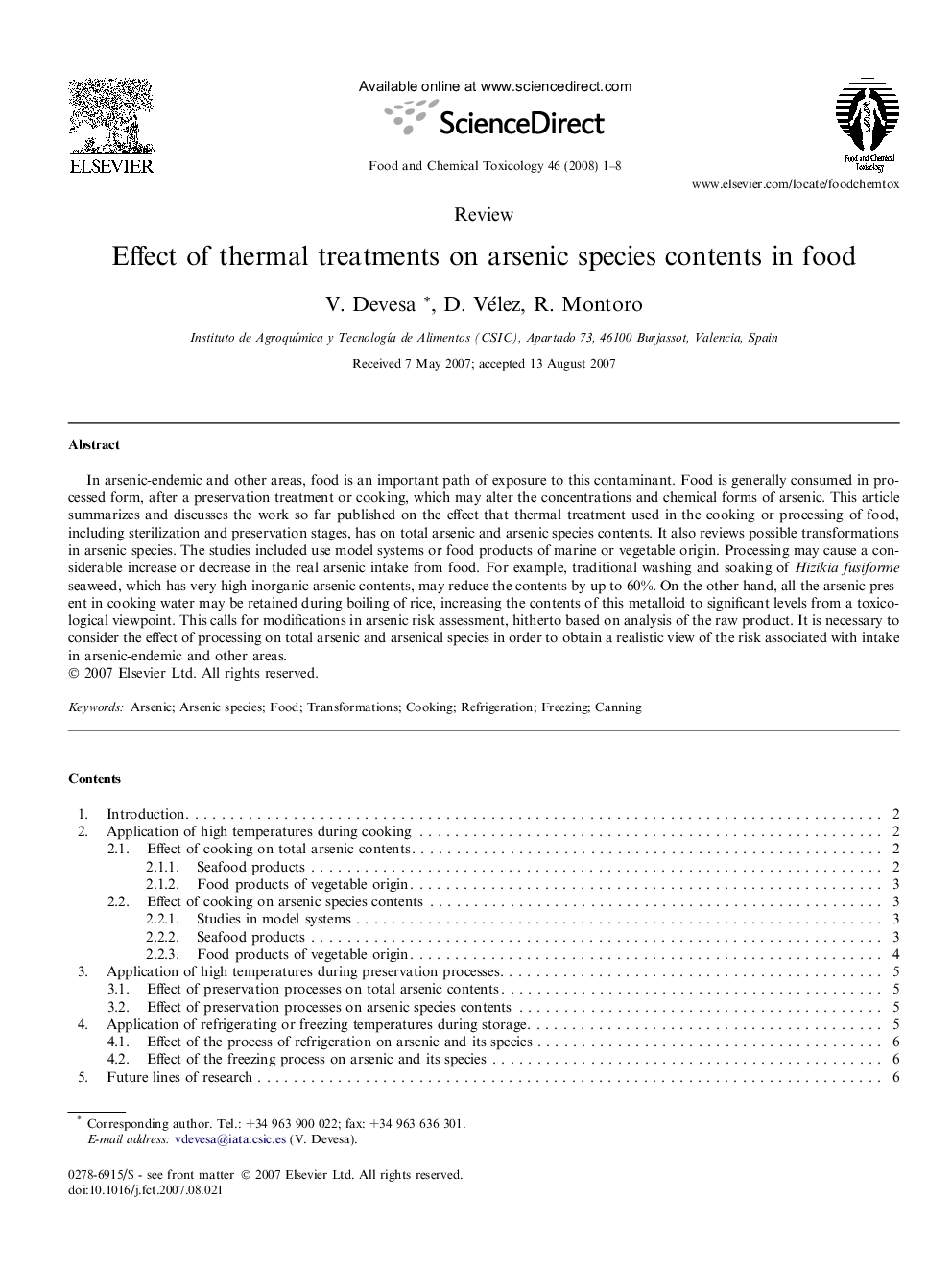| کد مقاله | کد نشریه | سال انتشار | مقاله انگلیسی | نسخه تمام متن |
|---|---|---|---|---|
| 2586699 | 1130909 | 2008 | 8 صفحه PDF | دانلود رایگان |

In arsenic-endemic and other areas, food is an important path of exposure to this contaminant. Food is generally consumed in processed form, after a preservation treatment or cooking, which may alter the concentrations and chemical forms of arsenic. This article summarizes and discusses the work so far published on the effect that thermal treatment used in the cooking or processing of food, including sterilization and preservation stages, has on total arsenic and arsenic species contents. It also reviews possible transformations in arsenic species. The studies included use model systems or food products of marine or vegetable origin. Processing may cause a considerable increase or decrease in the real arsenic intake from food. For example, traditional washing and soaking of Hizikia fusiforme seaweed, which has very high inorganic arsenic contents, may reduce the contents by up to 60%. On the other hand, all the arsenic present in cooking water may be retained during boiling of rice, increasing the contents of this metalloid to significant levels from a toxicological viewpoint. This calls for modifications in arsenic risk assessment, hitherto based on analysis of the raw product. It is necessary to consider the effect of processing on total arsenic and arsenical species in order to obtain a realistic view of the risk associated with intake in arsenic-endemic and other areas.
Journal: Food and Chemical Toxicology - Volume 46, Issue 1, January 2008, Pages 1–8